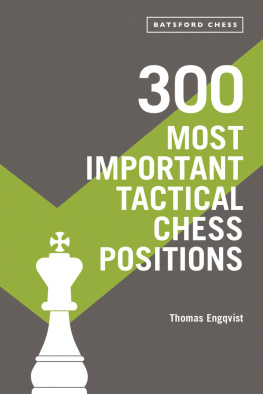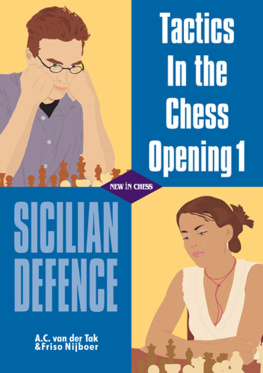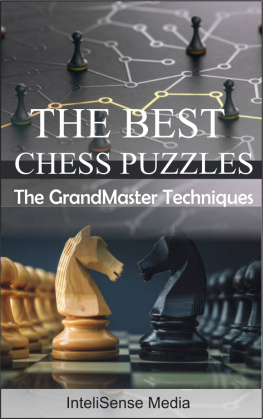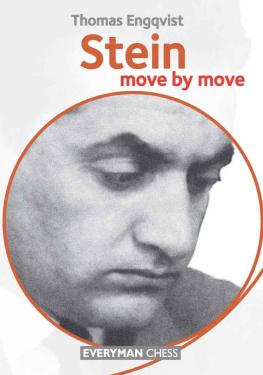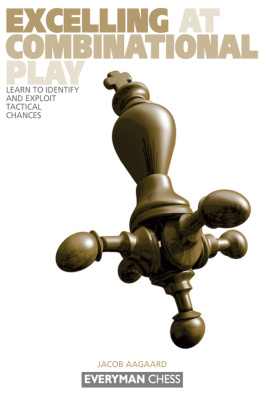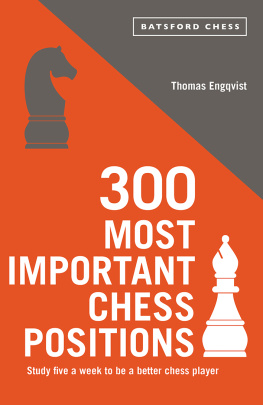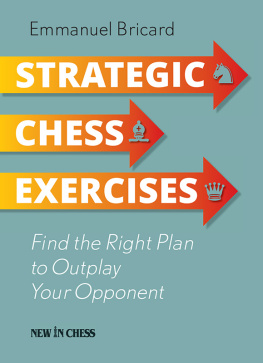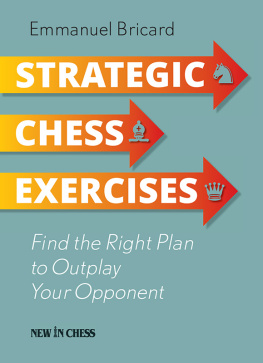Contents
Guide
300 Most Important Tactical Chess Positions
Study five a week to be a better chessplayer
Thomas Engqvist
Contents
Introduction
The book you are holding in your hand, dear reader, is a follow-up to my previous 300 Most Important Chess Positions Study five a week to be a better chess player (Batsford 2018). However, the two books are not dependent on each other since their respective focus is on different territories of chess. The former book dealt with positional methods whereas this one focuses on tactical ideas. They can therefore be integrated as part of a training scheme and be studied as a single course. Its a matter of taste in which order you wish to read them or whether you even prefer to work with them concurrently. However, one advantage of starting with the positional methods is that when you move on to the tactics you will come across numerous references to the former book, which you will recognise if you have been ambitious enough to remember the many key concepts given there.
The most important thing is to do the work in a step-by-step fashion. Once you have set off on your path of study you can expect to enrich your chess understanding and acquire more and more tactical and positional weaponry. But, most importantly, you will develop a good habit that will progressively and significantly improve your playing strength over the coming weeks and months. Learning to play good chess is like learning a language or a musical instrument. It does take time to gain a sufficient understanding of the ideas but afterwards youll never forget them. Indeed, when you have finished reading the books you will have gained sufficient experience to truly understand what to my mind are the most important factors concerning tactical and positional chess.
300 most important chess tactics in the opening, middlegame and endgame was originally an email course which started with the help of my Swedish homepage Schacksnack.se at the beginning of 2019 and lasted for approximately a year. The course was labelled Less is more The 300 most important tactical positions and was primarily aimed at Swedish chess players, since the course was written in the Swedish language. The main idea was to study five tactical positions very carefully every week. All positions have thus been thoroughly explored by the participants as well as myself with the assistance of the latest versions of Komodo, especially Komodo11. There the positions were presented randomly whereas in this book they are thematically arranged in the opening and middlegame section and according to the specific endgame in the endgame section. For example, in pawn endings, stalemates, breakthroughs, passed pawns, pawn races and transitions to queen endings come to the forefront and are therefore the most common tactical ideas to be explored. Both methods, random and structured, have their own merits. If the positions are solved randomly its more like a real game situation. However, in the book you will not know the result or the level of difficulty beforehand. The advantage of a thematic order is that you can practice a specific theme. The advantage of a specific endgame is that you can focus on the tactical peculiarities of a particular endgame as well as the peculiarities of the piece which is defining what kind of endgame it is.
I discovered this clever concept of studying a useful but limited number of positions by coincidence as a junior at the end of the 70s when my club SK-33 in the small town of Enkping helped to arrange a couple of meetings with Robert Danielsson. At the time he was a well-known chess specialist in Stockholm, teaching the game to children. Danielsson has written books and study materials for beginners on a high pedagogical level. In Sweden he is most famous for his categorisation of five basic tactical tricks with the help of just one word. The Swedish key word is GABI and it is indeed a clever acronym. Every letter stands for one fundamental and common tactical trick. G stands for Gaffel (Fork), A for Avdragare (Discoverer), B for Bindning (Pin), I for instngning (Trapping) and the last letter means verlastning (Overloading) If the letters are put in a more convenient order in the English language an equivalant word might be DPFOT. It might be a helpful acronym to help remember the five most common tactical tricks in the English language.
During one of our meetings in Stockholm, Danielsson and I agreed to follow a disciplined and structured scheme which meant I had to study five positions from Pachmans Mittelspielpraxis im Schach and Endspielpraxis im Schach every week. If you work diligently and follow such a schedule ambitiously it will take approximately one year to assimilate the content from all the positions. You will learn all this for a lifetime if you are careful and slowly repeat the positions from time to time, maybe even up to at least 10 times, especially if the position is unfamiliar to you, until you have the specific positions at your fingertips. The main reason to study only a limited number of five positions each week is to restrict your focus to only the most important ones and concentrate solely on them. If you study too many positions, and too quickly, the risk increases that sooner or later you lose discipline and forget what you once tried to learn. The key is to learn slowly but surely and take time to reflect on the positions. If you can discuss these with your friends then so much the better. The best way to learn is actually to teach others, so if you have this opportunity, and it comes natural to you, then you should take advantage of that.
The reason for the limit of 300 tactics in the present book is motivated by the phrase Less is more. Its according to the principle that the less you know the less you will forget. It will be easier to remember 300 tactical ideas in a systematic manner than 1,000 random ones, since you will have a limited number of tactics on which to concentrate and continually study and revise on a regular basis. Such a learning process will be more effective in the long run and help you to focus on the most important tactical ideas.
Its not enough to learn tactical play in itself. One also needs the mental tools to solve problems effectively. The groundbreaking book Play like a Grandmaster by Alexander Kotov impresses upon its readers the need for mastering three abilities to become an exceptionally good player. These abilities are fast and correct calculation of variations, a deep feeling for combinations and a correct evaluation of different kinds of positions. In the present book the focus will be mostly on the second ability, a deep feeling for combinations, since its an ability which by nature is more tactical. However, to be good at executing and preparing combinations you obviously must be good at calculating complicated variations as well. In a sense tactics is a hybrid of these two abilities and both must be mastered if your aim is to become a really strong tactician at the board.
When a position has been reached where a combination is possible then the time has come to execute it. To be able to do this effectively, a great arsenal of tactical and combinational ideas is needed as well as high level calculating ability. When it comes to the definition of a combination its obviously not enough to quote Alekhines The combination is the heart of chess: Its not consensus in the chess world that defines what a combination really is. According to the

